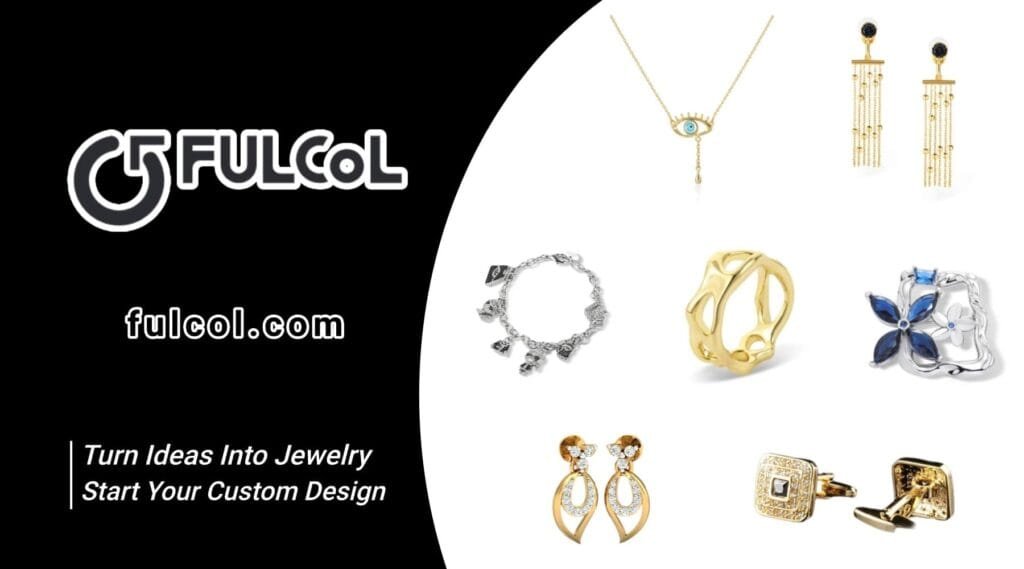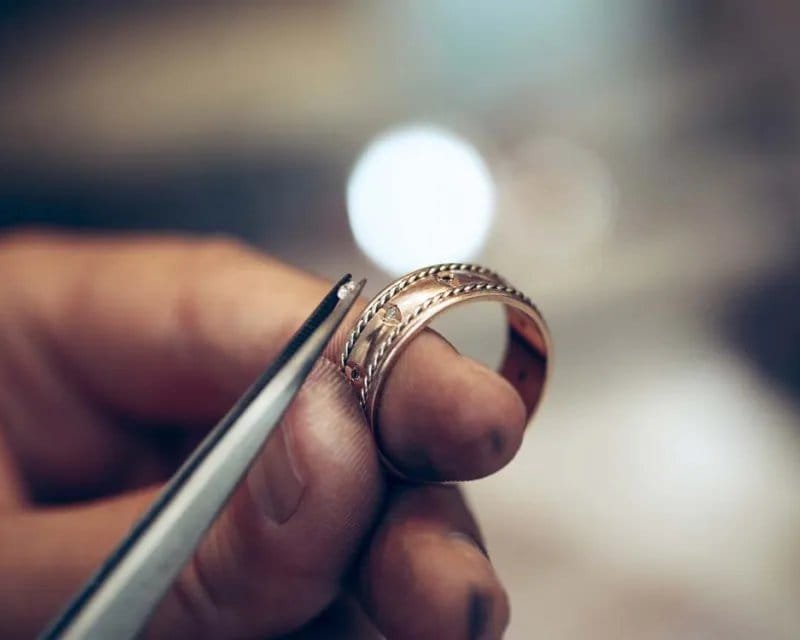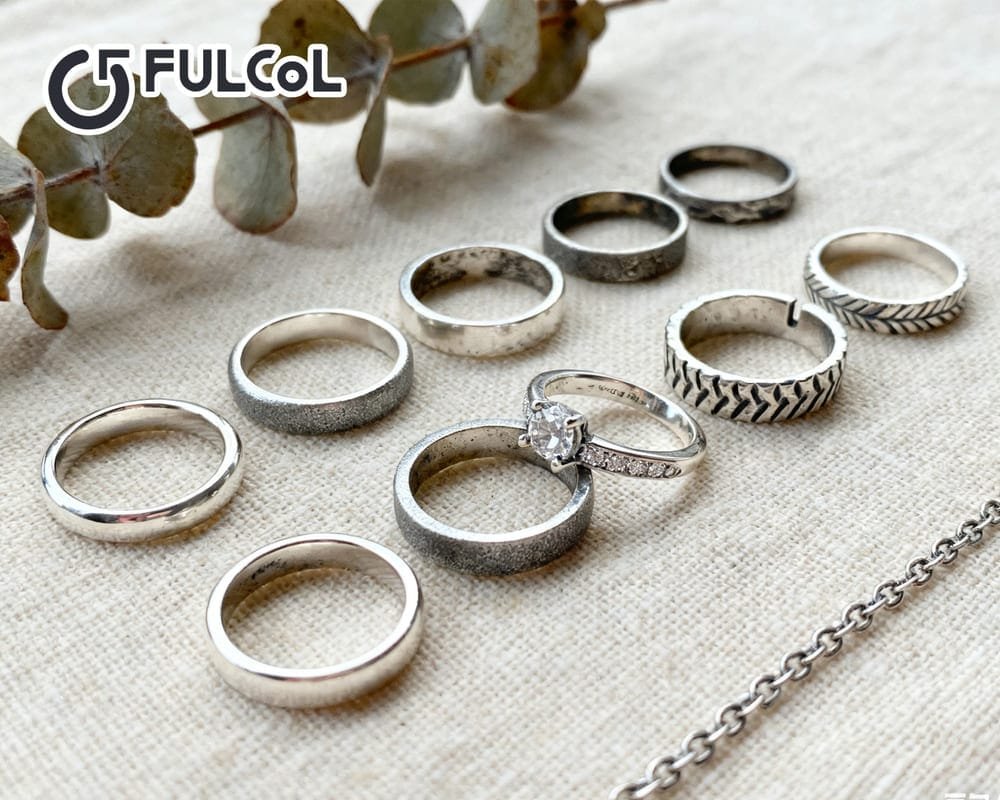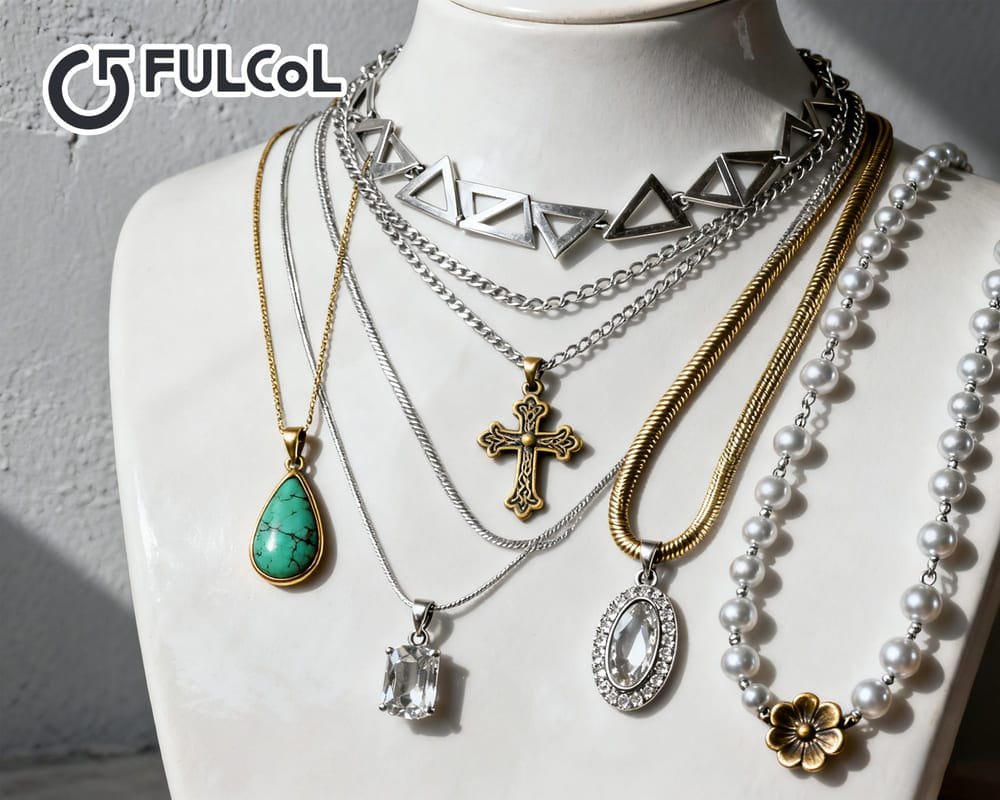When we wear a dazzling gemstone jewelry, perhaps few people will think about how it turns from an unpolished ore into an exquisite and eye-catching jewelry. Behind this, there are actually rigorous and complex process flows. For every custom jewelry wholesale manufacturer who is committed to building a brand and providing high-quality jewelry products, understanding and mastering the processing process of gemstone jewelry not only helps to control product quality, but is also the key to winning customer trust.
Fulcol gemstone jewelry manufacturer will systematically introduce the process of gemstone jewelry from rough stone selection, cutting and polishing to inlay design, quality inspection and other links. Whether you are a jewelry entrepreneur, retailer, or gemstone jewelry manufacturer, we will provide you with practical knowledge and suggestions.
Table of contents
Collection and preliminary screening of gemstones
The journey of gemstone jewelry begins in the mining area deep in the earth. Natural gemstones need to be extracted through mining activities, which may involve underground mining, water washing and screening, or open-pit blasting. Different gemstones are located in different geological environments, and the mining methods used are also different. For example, rubies and sapphires are mostly found in metamorphic rocks and alluvial deposits, while emeralds are commonly found in pegmatites and shale layers.
The raw stones collected are usually mixed with impurities or associated minerals, so they need to be initially screened by hand or machine. The main task of this stage is to distinguish gemstone materials with processing potential. This screening relies on experienced sorters who will observe the color, transparency, crack distribution and inclusions of the gemstones to determine which raw stones are suitable for subsequent polishing processes.
For professional custom design jewelry manufacturers, it is crucial to cooperate with legal and compliant mineral resource suppliers. On the one hand, it is a guarantee of product quality, and on the other hand, it also reflects a responsible attitude towards environmental protection and ethical procurement.
Cutting and polishing
The cutting of gemstones is one of the most technical and artistic links in the entire processing process. The quality of the cut directly determines the fire, brightness and visual value of the gemstone. The initial cutting begins with the designer’s evaluation of the shape and defects of the raw stone, and then combines the customer’s requirements for the shape of the finished product (such as round, oval, pear, princess square, etc.) to develop the best cutting plan.
Common cutting tools include laser cutters, diamond saw blades, etc. After positioning, the rough stone will be divided into small pieces that can be polished according to the preset direction. Then enter the polishing process – use grinding wheels, grinding discs, polishing cloths and other tools to carefully polish each side. Experienced craftsmen will pay special attention to the angle of the cut, symmetry and degree of polishing, because even a slight deviation may affect the overall visual effect.
It is worth noting that the hardness of different gemstones varies greatly. For example, the hardness of diamonds reaches 10 Mohs, while lapis lazuli is only 5-5.5, so the polishing tools and pressure need to be adjusted accordingly. This is why gemstone polishing must be operated by professionals to avoid cracking or loss of value of the rough stone due to process errors.
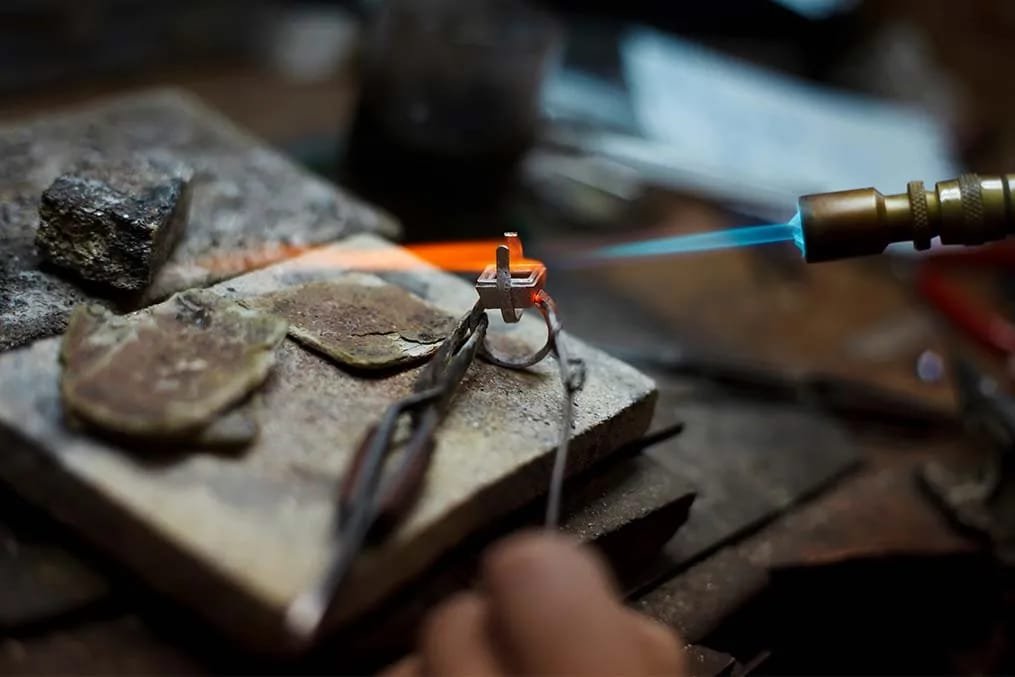
Clarity and color optimization
After polishing, some gemstones may need to be slightly processed to enhance their visual beauty. Common gemstone optimization methods in the industry include heating, oiling, coloring, irradiation, etc. Among them, heating treatment is the most widely accepted traditional method, especially for sapphires and rubies, to enhance the saturation and uniformity of color.
For example, emeralds are often injected with oil to improve the performance of cracks, making them more transparent and moist in the finished inlaid products. Such treatments need to be transparently and legally informed to consumers, especially for wholesale manufacturers of custom jewelry, where integrity marks are the cornerstone of building brand reputation.
It is worth mentioning that high-quality raw stones do not necessarily need to be treated, but rather a manifestation of value. When choosing whether to treat, manufacturers need to consider factors such as cost, customer acceptance and target market standards, and weigh the pros and cons to make decisions.
Jewelry design and CAD modeling
Having exquisite gemstones does not mean that jewelry can be formed immediately. How to show the beauty of gemstones through structural design is a very creative task. Modern gemstone jewelry design is increasingly dependent on CAD (computer-aided design) systems. Designers can simulate the inlay structure, proportions and wearing effects through professional software (such as RhinoGold, MatrixGold, JewelCAD, etc.), greatly improving design efficiency and visualization capabilities.
The advantages of CAD modeling are not only accuracy and efficiency, but also the ability to predict potential problems in advance. For example, whether the prongs cover the gemstones and whether the base hinders light penetration. For custom jewelry business, CAD also makes it easy for customers to preview and confirm the design, which helps reduce errors and modification costs.
The focus of this stage is to find a balance between aesthetics and structure. A good design should not only be pleasing to the eye, but also meet the standards of comfort, durability and durability, which is also one of the professional qualities that gem jewelry manufacturers must possess.
Metal casting and hand-set
After the design is confirmed, the metal part will be made. Commonly used metals include 925 sterling silver, 14K gold, 18K gold, platinum, brass, etc. Different metals have different melting points and fluidity, so corresponding casting techniques need to be adopted. Lost wax casting is a widely used method that forms a metal bracket by pouring plaster into a wax mold, burning off the wax core, and then injecting molten metal.
After casting, the metal blank still needs to be polished, polished and deburred before entering the setting process. There are many ways to set: claw setting, bezel setting, track setting, invisible setting, etc., each method has a specific applicable gem type and design style. Hand-set setting requires extremely high stability and precision, and any operational errors may cause the gemstone to loosen or break.
In addition, some high-end custom jewelry will also undergo secondary welding, surface brushing, electroplating, etc. to enhance the overall visual effect and corrosion resistance. The whole process reflects the profound skills of jewelry craftsmen and also shows the manufacturer’s strict control of quality and details.
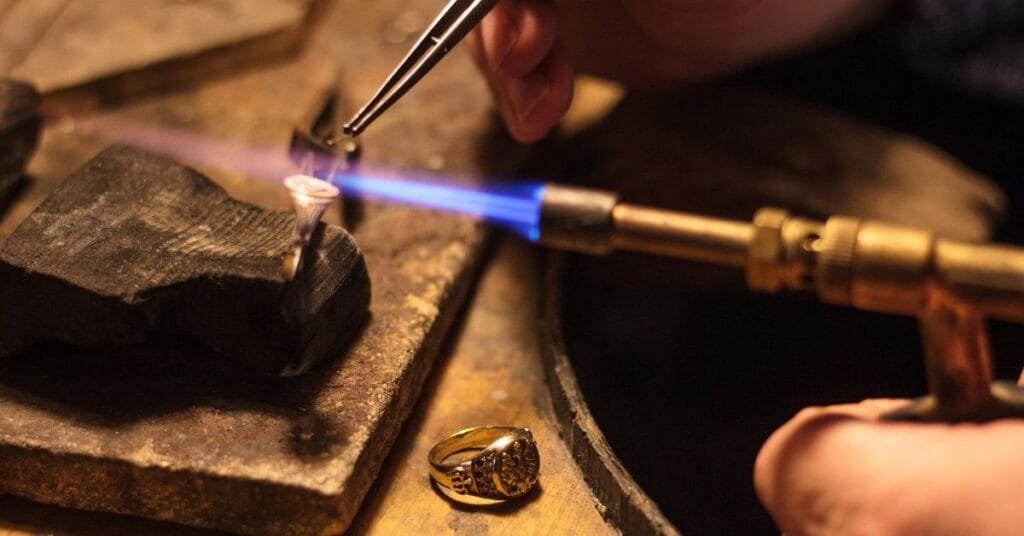
Polishing, electroplating and quality inspection
After the gemstone is set, the entire piece of jewelry needs to be polished and surface treated. Different parts usually require different treatment methods. For example, the inner ring of the ring needs to be polished and smooth to improve wearing comfort; the surface can be mirror polished and electroplated with metal luster to increase visual appeal.
Electroplating is an indispensable step in modern jewelry. Common electroplating materials include platinum, gold, rose gold, black gold, etc. This not only improves the appearance, but also plays an anti-oxidation and anti-fading role. Professional custom jewelry wholesale manufacturers usually use three-layer electroplating or vacuum ion plating to ensure that the electroplating is uniform, firm, non-toxic and environmentally friendly.
Before leaving the factory, each piece of gem jewelry must undergo a strict quality inspection process. The test contents include gem firmness, metal surface defects, size deviation, welding firmness, wearing stability, etc. Large manufacturers also use tensile machines, acid-base test fluids and other instruments for multi-dimensional testing to ensure that the jewelry meets the export standards of mainstream markets such as Europe, America, Japan, and Southeast Asia.
Packaging, certificates and delivery
Products with flawless quality also need to be equipped with professional packaging and certificates to become finished products that are truly marketable. In terms of packaging, professional gem jewelry manufacturers will choose appropriate materials and styles according to brand positioning, such as high-end flocking boxes, customized paper bags, and environmentally friendly paper boxes. In addition, maintenance cards, certificates of conformity, and material instructions are required to enhance consumer experience.
For jewelry containing natural gemstones, it is usually recommended to attach gemstone certificates. Certification reports issued by authoritative organizations are the key to improving product trust. Especially in the field of customized jewelry wholesale, a transparent certificate mechanism can effectively dispel customer doubts and increase the order rate.
| Start Your Custom Order | Email: info@fulcol.com | Number: +86 13055603907 |
From minerals to artworks, every piece of gem jewelry condenses the efforts and wisdom of countless craftsmen and designers. Custom jewelry wholesale manufacturers play a core role in this process. They must not only master technology, but also have insight into the market and understand customers in order to stand out in the fiercely competitive jewelry industry.
In the future, as consumers’ pursuit of personalization and quality increases, refined and transparent gem jewelry processing will become the trend of industry development. Fulcol will continue to create more jewelry products worth inheriting for global customers with high-quality craftsmanship and professional customization services.
